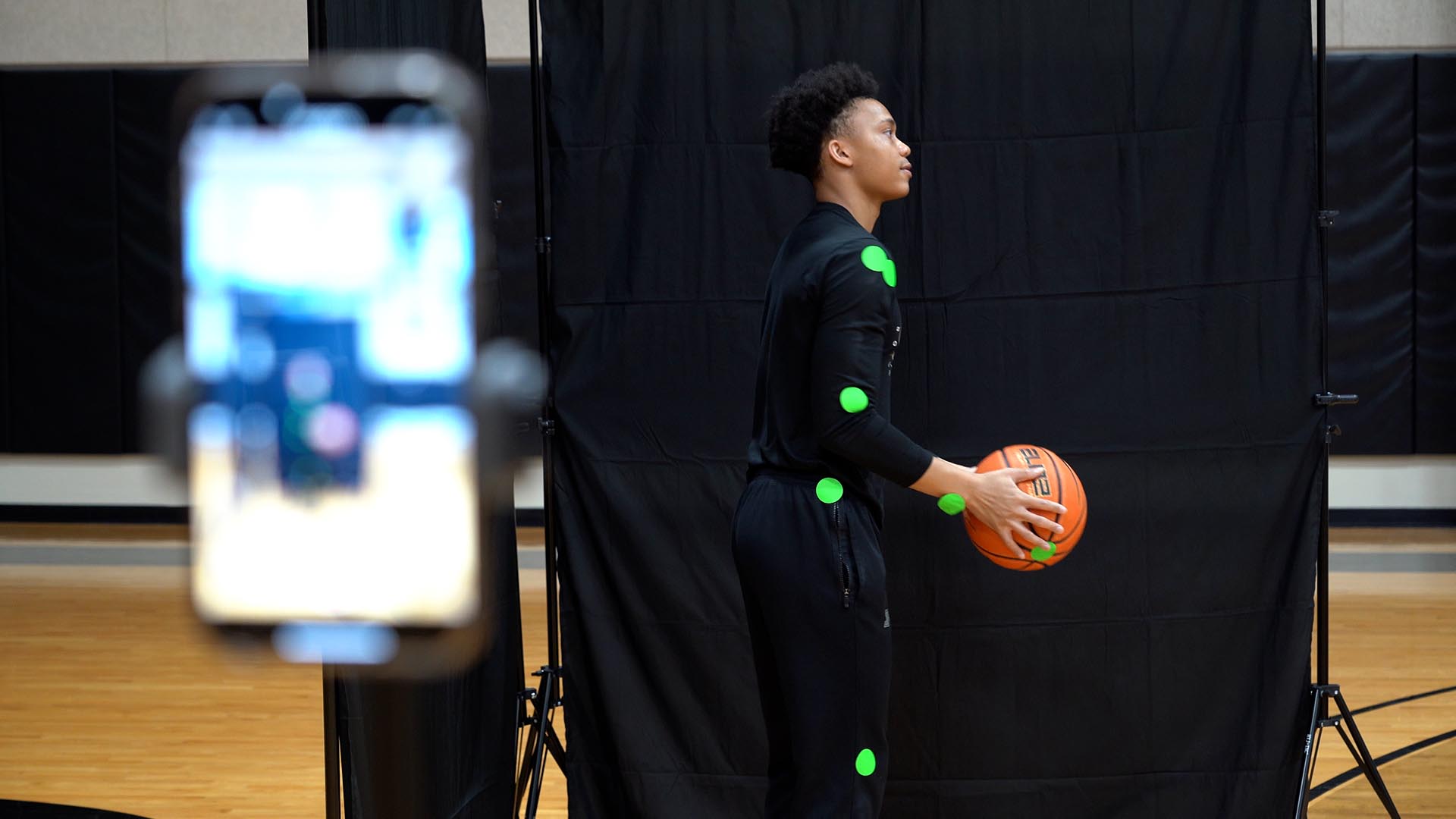Basketball biomechanics: Chase Martin researches the science of free throws
Playing for a Big Ten championship basketball team is a huge commitment. But so is studying mechanical engineering! Purdue men's basketball player Chase Martin has found a way to combine these two pursuits — conducting a research project on the biomechanics of the perfect free throw.
The first obvious question: how on earth do you find time to do both?
“I get that question a lot,” laughs Martin, who is finishing both his senior season on the Purdue men’s basketball team, and his senior year studying mechanical engineering. “I chose Purdue because of engineering. It was really tough at the beginning because we had a lot of technical classes, and of course being on a sports team means I had a lot to keep track of. But this is what I committed to, and when I commit I always put forth a full effort.”
“I first met Chase in my Controls lecture,” said Euiwon Bae, senior research scientist in mechanical engineering. “When I found out he was in ME and playing basketball, I was really impressed. When he told me he was also pre-med, I couldn’t believe it!”
In considering medical school, Martin wanted some undergraduate research experience on his transcript. Bae suggested they collaborate on a project analyzing the biomechanics of basketball shots. “We began by doing a literature review — obviously we are not the first people to research the shooting motion of a basketball,” said Bae. “Based on that review of previous studies, they began conducting their own experiments.”
Martin joined up with fellow mechanical engineering students Akshat Singh and Ryan Carter to develop a rudimentary motion capture system. By affixing green stickers onto shooters’ arms and legs, and filming with two smartphones at 90-degree angles, they could extract raw data about each individual’s shooting motion.

“By measuring these variables, we are essentially creating a model of the shot in 2D space,” said Singh. “We focus on the crucial joints — the shoulder, elbow, wrist, hip, knee, and ankle — so we can weed out other distraction factors with someone’s form, and properly analyze the angles of the arms and legs, as well as the release angle of the ball.”
Martin explains: "One of the goals of this research is, we want to be able to tell people: if your arms and legs are this long, then these are the data ranges you should aim for to lead to a repeatable shot.”
“It’s very hard to find the universal shot that’s going to work for everybody,” said Singh. “Like Chase said, the goal is consistency. That’s why we captured both ten makes and ten misses for each person. That way we can compare the two to see what variables differed, and what body angles each person should strive to repeat.”
“We’re pretty pleased with the results so far,” said Carter. “We have clear separation in our data, and it’s allowing us to build a kinematic model to tell us what aspects of a person’s form are most conducive to a successful shot.”
Through research, the team are able to combine their two loves: basketball and engineering. “Doing research as an undergrad does come with a few challenges,” said Singh. “We don’t have deadlines or assignments — it’s all on us to get our work done in the allotted time. Our teamwork skills have gotten a lot better. We were friends before, but working together on a project allows all of us to bring our strengths to the table, and it’s an opportunity I’ve been grateful to have. And Professor Bae has been a great mentor for us, to guide the project forward.”
“Doing research has definitely improved my problem-solving abilities,” said Carter. “There is no textbook for this. We have to sit down as a group and discuss everything, and determine the next steps to address how to move forward.”
“I’ve really become more interested in research as a result of this,” said Martin. “Coding and collecting data is a lot of work, but it’s something I’m passionate about. I feel like we have a chance to publish a paper and report our findings on this, and even develop it into something more.”

Writer: Jared Pike, jaredpike@purdue.edu, 765-496-0374
Source: Euiwon Bae, ebae@purdue.edu
